3. Navigation and safety equipment available in a fast rescue boat
3.1 Boat equipment[1]
Normal equipment of rigid fast rescue boats:
- 2 Oars
- 2 rescue quotes and line >30m
- Sea anchor and tripping line >10m
- Painter
- Tow line 50 M
- First Aid kit
- TPA
- Bailer
- Knife
- Compass
- Electric torch spare batteries and bulb
- Search light
- Radar reflector
- Bucket
- Boat hook
In addition to this equipment, Inflatable Rescue boats shall carry:
- Buoyant safety knife
- 2 sponges
- A manual operated bellows or pump
- A repair kit for repairing punctures
- A safety boat hook
Stowage of equipment
The entire boat equipment must be stowed away for easy access; this is usually a water tight compartment. Equipment not actually in use shall be stowed in lockers so that they are not lost in the seaway or in the event of a capsize[2]
Some other equipment such as mooring lines should be tucked away in secured bags, compartments or secured somewhere on the FRB, where crew members and casualty’s cant trip or fall. If the FRB flips over the crew members could get entangled or the gear could be lost.
- Always use caution as crew member may get caught in a bight of rope or a loose piece of line caught in the jet intake or propellers.
Equipment for normal inflation and deflation of buoyancy chambers of inflatable fast rescue boats
The minimum chambers in a FRB are 5, and inflation valves are usually color coded for the PSI required. An efficient manual operated bellows or pump is supplied with the crafts normal equipment, every evening the colder temperatures cause the Sponsons to loose pressure. The crew members must ensure that the boat is in full readiness. The inflation procedures are as follows:
- Starting at the bow working aft
- Uncap inflation chamber with bellows pump to 3 psi or firm
- Work forward port and starboard to aft port and starboard
- For each inflation chamber there should be a pressure release chamber.
- Do not exceed manufacturers psi.
3.2 Navigation equipment
- Magnetic compass
- VHF
- Additional equipment may include GPS, radar
Compass
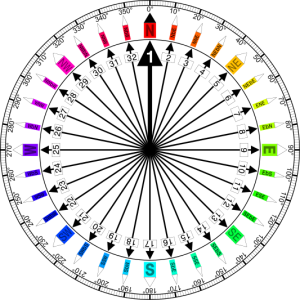
The Magnetic compass have been used as a navigational aid since the early fourteen
hundreds and are still required on all vessels as a primary source of direction. It determines direction relative to the earth’s Magnetic poles. It is divided into 360º or 32 Points, as shown. There is 11.¼ º in every Point. Depending on the quality of the compass, it may have 4, 8, 16 or 32 Points.
When steering by compass course, you should always remember alterations to starboard makes the degrees or points increase and alterations to port make your degrees or Points decrease.
Compass Errors
Variation
This is the name given to the error caused by the difference in position between the true and magnetic poles. As its name denotes, it varies from place to place across the world, but it is accurately tabulated for the navigator’s use.
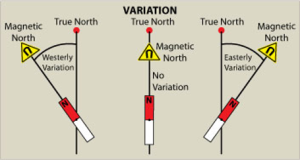
Deviation
The second of the two errors which affect the magnetic compass, deviation, is caused by the magnetic influence of anything near the compass needle. Someone placing a metal knife alongside the binnacle, for example, will cause a deflection of the compass needle and result in deviation error. Steel in the construction of the ship, electric circuits, motors, and so on, can all affect the compass and create a deviation error.
Some Difficulties that could also be associated while conducting search patterns, is having to correct for your variation/ deviation to your course, as well pending on the type of compass being used, increments may vary from 32 points to 8 points[3]
VHF (Very High Frequency Radio)
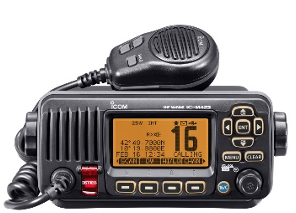
The amendments to SOLAS 1974 regulation III/6, Communications’, entered into force on 1 February 1992. The regulation stipulates that all passenger ships and cargo ships of 500 tons gross tonnage and upwards will require at least three portable two-way VHF radiotelephones and, in addition, a radar transponder on each side of the ship, stowed so that they can be rapidly placed in any survival craft and rescue boats that must be carried when the survival craft are more than 100 meters from the stem or stern. Cargo ships of 300 tons gross tonnage and upwards but less than 500 tons will require at least 2 two-way VHF radiotelephones and one radar transponder. Capable of operation on frequency 156.8 MHz (VHF channel 16) and on at least one additional channel within 5 seconds of power on.
Standard Controls on VHF radios
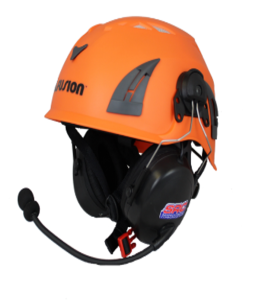
- Distress- when depressed sends out a distress call along with your position and radio automatically goes to ch26
- 16/9- Quickly switch to either ch26 or 9
- Hi/Lo- Change from H or Low transmitting frequency
- Scan/Save– Scan other frequencies and save them
- DW/TRI– Monitor two different channels at once
- Call/Menu– To place a DSC call also menu button to navigate thru the system
- Squelch– Turn all the way to the left and then slightly to the right till the noise stops, this enables you to have max reception.
- PWR/VOL– Turns radio on/off and Volume control
- CH– Channel selector
Hands free 2-way communications- These helmets allow for bridge to Rescue boat communications without comprising control.
The types of radio equipment used must be able to turn on and ready to use within 5 secs also have a power supply with sufficient capacity for 8 hours of operation. Battery supply for the radios must be separate from the one used for starting the engine(s).
Transmission power ranges between 1 and 25 watts, giving a maximum range of up to about 60 nautical miles between antennas mounted on ships and 5 nautical miles between antennas mounted on small boats at sea level. Antennas have to be vertical in order to have good reception.
GPS – (optional equipment)
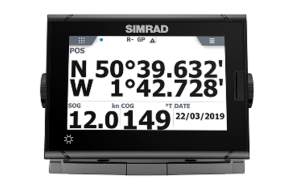
Global Position Satellite navigation: Not a requirement on FRB’s but may be part of its optional equipment. This allows for greater chances of rescue because of the exact position and track covered for known datum. This information can be relayed by the nearest Coast Guard station or vessel. Most GPS units have a tracking capability. It also keeps track of known datum and area covered.
Radar (optional equipment)
Marine radars are either X-Bands or S-Bands systems that provides bearing and distance of (targets) ships and land in the area of your own ship (radar scanner) for use in collision avoidance and navigation at sea in restricted visibility
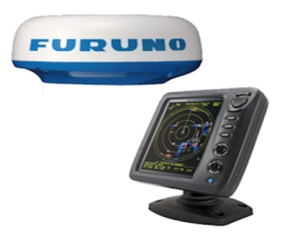
3.3 Safety equipment
Pyrotechnics
In Canada, all Pyrotechnics expire 4 years from the manufacturers date. These should never be fired unless an emergency situation is imminent! All Survival craft are required to carry 12 pyrotechnics, 4 of which will be Class “A”, 6 Class “C” and 2 Class “D”. Aside from the survival craft, the Bridge also has pyrotechnics’, which may be a duty for a crew member to bring in the craft. All pyro’s will have the month, year and lot number on its casing.
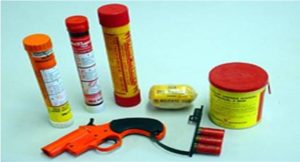
The following are the different classes of Pyrotechnics used in the commercial industry, it is important to understand the pictograms prior to using these, which are part of the Canadian modifications.
Canadian Lifesaving Appliances Standards
“A” Class Pyrotechnic: A single projectile fired to a height of not less than 300 meters at not less than 30,000 cd. It must burn for at least 40 seconds. (4 required in L/B or L/R SOLAS 2 for B packs)
“B” Class Pyrotechnic: A multi star flare is capable of producing, in rapid succession, and at intervals not greater than 15 seconds two or more red stars.
Where a visual signal produces only a single red star with in the 15 second interval required but meets the requirements of multi star flares in all other respects, the visual signal or its package is to be clearly marked to indicate that 2 devices are required to be projected within 15 seconds in order to meet the requirement of a multi star flare. Each red star must have a minimum luminosity of 10,000 cd, which will burn for not less than 5.5 seconds not less than 90 meters.
“C” Class Pyrotechnic: The Hand flare must have bright red light at a minimum luminosity of 15000cdl for a minimum of 2 minutes. They must also burn underwater for 10 seconds.
“D” Class Pyrotechnic: Emit smoke of a highly visible color of a uniform rate for a period of not less than 3 minutes when floating in calm water and shall not be capable of emitting any flame while activated.
Electric torch (flashlight): Can signal Morse code, it is 3 short flashes, 3 long flashes followed by 3 short flashes S.O.S ☼ ☼ ☼ ▬ ▬ ▬ ☼ ☼ ☼
Heliograph (signal mirror): has reflective properties, that can laminate up to a million candlepower on a clear day, used for getting attention from ships or aircraft.
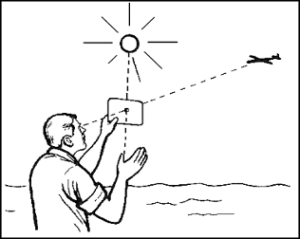
Whistle: Are required in survival craft and also attached to immersion suits and life jackets. The Voice in cold climates or hot climates, dehydration or hypothermia has the ability to disrupt the sound and the fact that it is being absorbed by the water it will not be as effective as a whistle.
Search lights: Are primarily used for spotting survivors but have a range up to 1 million cd power, which can also signal S.O.S The requirements are to have effective illumination a light-colored object with a width of 18 m at 180 meters for 6 hours or for 3 hours continuously.
Requirements for SARTs
In SAR operations and abandon ship the FRC shall have 1 SART placed in the FRC. GMDSS vessels from 300 to 500 GRT are required to carry 1 SART, and vessels over 500 GRT are required to carry 2. IMO has recognized AIS SARTs as being equivalent to radar SARTs for SOLAS carriage – i.e., ships can substitute an AIS SART for a radar SART.
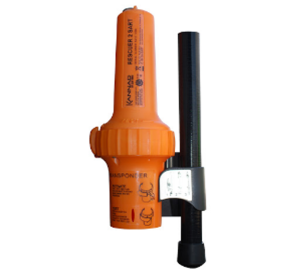
Fire Extinguisher: Dry chemical extinguisher, Class BC or ABC Marine type is recommended because of the resistance to corrosion and must be an approved extinguisher (ULC).
Discovering a Fire
When a crewmember becomes aware of a fire in the engine compartment use some of the following procedures.
- Shut down the engine.
- Close off ventilation.
- Turn fuel supply off, usually located bottom of the fuel tank.
- If the craft is equipped with an automatic CO2 system, ensure that it is discharging.
- If equipped with a manual release, activate the system and ensure that it is discharging.
- Place a Mayday call to alert others of your situation.
- Ensure that all crew members are wearing their PFD.
- Deploy sea anchor.
- Move over to an area clear from smoke and or flames.
- Ready for abandonment if necessary.
- Allow time for the concentration of CO2 to work, don’t abandon prematurely.
- Allow time after the fire goes out to ensure it doesn’t re-flash when opening the compartment and introducing a fresh supply of oxygen.
Fighting a fire with a portable extinguisher
If a small opening is available to the compartment, Discharge extinguisher thru it. If you need to open the compartment, carefully open the hatch, stand on the hinged side of the hatch, allowing fresh air to the compartment may cause it to back draft.
- Protect your hands and face.
- Also, try not to breathe in the gases and vapors.
- When using the extinguisher, use the P.A.S.S. method.
- Pull the pin.
- Aim at the base of the fire.
- Squeeze the trigger firmly.
- Sweep from side to side.
3.4 Emergency equipment
The FRB’s requires having the following Emergency Equipment:
- Re-righting capabilities, either a fixed inflated chamber, mounted on an “A” Frame which will have enough Buoyancy to right the overturned FRB/ or a Manual activated cylinder that will inflate a Tube mounted on the “A” Frame and re-right the overturned FRB.
- A Bellows type pump for the Sponsons
- Search Light
- Sea Anchor
- Emergency Tow line (50m)
- Bilge pump, electric and manual.
There are several different designs of re-righting systems and each one has its own characteristics but there are basically 3 types on the market today which are:
- The Fixed type fiberglass or GRP – automatically re-rights the boat upon capsize very little maintenance is required but subject to impacts on ships Hull when coming alongside.
- The inflated fixed pneumatic float type– automatically re-rights the boat upon capsize The Balloon has to be kept firmly inflated but has more sail area. Has good cushioning on ship’s hull because of the balloon’s width.
- The Cylinder activated type– Re-righting needs to be inflated manually when the boat capsizes. Has a low sail area which allows for more speed and also requires crew members to have a full understanding on how it works. The CO² cylinder has a safety pin in the head of the cylinder; this pin is only installed on the firing head when the bottle is being transported, or if you are carrying out any service work to the system. It is a failsafe system so that the bottle cannot be accidentally fired. It must be removed after servicing and before the vessel is placed back into service to ensure successful operation when needed.
3.5 Inboard motor engines

This consists of an engine, shaft, propeller and rudder.
Advantages
- More Stability
- Maintenance friendly
- Usually engine is unnoticeable
Disadvantages
- Expensive
- Engine and shaft, takes up a lot of room
- Higher noise levels
Pre starting checks
- Oil level
- Coolant- if raw water cooled, ensures proper circulation.
- Marine gear
- Batteries
- Bilge blower turned on
3.6 Outboard Motor Engines
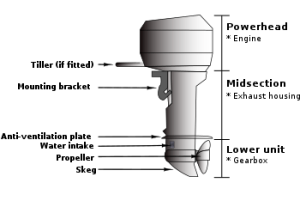
Advantages
- Are very easy to work on.
- Portable
- Cheaper
- Leaves more room in the boat.
Disadvantages
- Makes boat stern heavy.
- Has more squats than other crafts unless used with trim tabs.
- Should never be run out of water because of pump.
- Propeller can be dangerous to casualty in water unless caged in.
Pre starting checks
- Oil level
- Coolant- make sure it has water pumping.
- Foot oil.
- Batteries
- Spare plug and prop are onboard.
- Open relieve valve on fuel tank.
- Close choke on cold engine to start, then move to run position.
- Pump fuel bulb up to prime engine.
Cold Weather Starting
Out boards are notorious for having issues for having trouble for cold weather starting. The use of the choke and repeated starting attempts may be required (Avoid using starting fluids as they are detrimental to engine life).
Helpful Hints
- Have boat in the water with engine tilted in and leave it sit for a while to stabilize the warmer water temperature compared to the cooler air.
- Have fuel stabilizer in the fuel.
- Use richer fuel mixture in winter months.
- Warm up the batteries
- Use lower viscosity oil.
Trouble Shooting
- Always familiarize yourself with the user’s manual
- Engine fails to start, try priming the engine, use the choke, check the fuel, and check the prop is clear. Fuel line connected properly, emergency stop is on, inspect battery connections, fuel tank vent is open, check the fuel filters and check the engine is in neutral.
Engine Power Low: Propeller in good condition, gear oil is at proper level, throttle controls working properly, fuel mixture is proper, spark plug is in good condition.
Normal Operation: Check fuel level regularly, check the overboard discharge of cooling water is good and listen for abnormal sounds.
Note
Some engines are two strokes or four strokes. If two stroke the fuel may be required to be mixed with oil for proper lubrication if not equipped with an oil system. Also the fuel tanks have a breather screw to prevent a vacuum build up on the fuel tank and keep the engine running. There are still a few diesel outboard engines in service. Never Leave an outboard motor on its side.
Propeller guards: This allows for better manoeuvring and for Safety of persons in water. Protects the blades from debris and the bottom, however it also reduces power.
Nozzles fitted over an open propeller which gives increased thrust with minimal Horsepower.
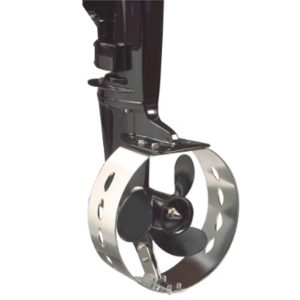
Caged Prop: This type of guard has a cage or screen which minimizes risk of injury to the casualty retrieval and or persons in the water but also reduces speed. When prop is caged, it is more likely to get filled with kelp.
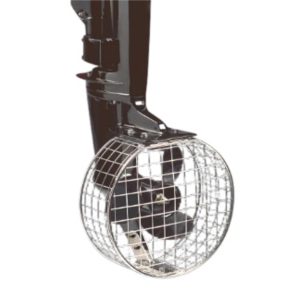
3.7 Water Jet Propulsion
Manoeuvring
- Very manoeuvrable in closed areas
- Ability to rotate near its own axis
Buckets
- Provide both steering and thrust. Adjustments and ahead and astern control.
Pre starting checks
- Oil level
- Coolant.
- Marine gear
- Batteries
- Hydraulics level and function.
- Radio checks
Starting
- Ensure power switch is on.
- Throttle and gear system is in neutral.
- Turn key to start push start button (Depending on configuration)
- Check jet pressure when the boat is in the water.
- Set controls to manufacturers guidelines.
- Operate controls
- Stop the engine and test emergency stop device and restart.
Stopping
- When boat is out of water run up the rpms to eject sea water out of jets
- Put throttle and bucket control to neutral.
- Shut off engine with stop button or kill switch.
- Turn off the power switch.
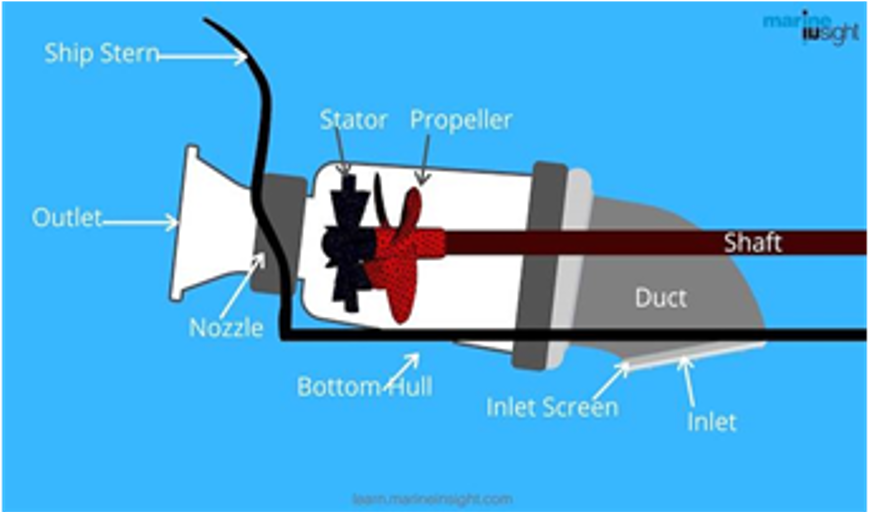
Engine Priming
Most Inboards self-prime through the fuel pump, sometimes leaving the ignition switch on for a few seconds to have the fuel primed up, If not a priming switch or manual priming bubble will need to be used.
Manufactures guidelines for starting (follow operators’ instructions)
- On most engines the boats controls should be in the neutral position and throttle off or low.
- Turn on power to engine or entire boat.
- Make sure all pre checks were done.
- Turn the key to start or on some turn on key and press start button.
- Try to let engine warm up before engaging throttle.
- DO NOT RUN BOAT OUT OF WATER FOR EXTENDED PERIODS
- Check for water flow from engine cooling discharge.
- Check all pressures and temperatures as per manufactures guidelines.
- Remember diesel and gasoline fuels do deter eating over time, fuel additives should be added and every year the old fuel should be purged from the tank and replaced with fresh fuel.
Tip
General Engine Maintenance and Trouble Shooting
- All engines are required to be started monthly for proper operation.
- Oil level and fuel levels are to be topped up.
- Electrical system is to be checked for proper operation.
- All fittings are to be greased.
- Steering and emergency steering to be checked for proper operation.
- Flow of cooling water is proper.
- Engine runs and sounds normal.
- Fuel is checked for water contamination.
Engine Trouble Shooting
These are general checks, all manuals have general trouble shooting guides, familiarization with these guides will help you in case of an emergency.
Failure to Start
- Power turned on? (Turn Power on)
- Fuel in Tank? (Add proper Fuel)
- Fuel turned on? (Turn Fuel on)
- Boats controls in neutral? (Boost batteries)
- Batteries charged?
- Emergency shut off switch in proper position (check emergency kill switch)
3.8 Boat Equipment and Readiness
Before the ship leaves port and always during the voyage, all life-saving appliances shall be in working order and ready for immediate use. SOLAS and the Fast Rescue Boat be launched within 5 minutes.
Fuels and Oils
- Boats fuel is to be full prior to launch and topped up at the end of every use for emergency use and to prevent moisture/condensation build up in fuel tank.
- Boats oil, hydraulic and cooling systems are full.
- Boats electrical system is to be fully charged and Zinc/lead anodes are in good shape.
- All lines, towing, rescue equipment is in the boat and in proper operational state and stored properly if applicable.
- All lights and search lights are functional.
- VHF radios are checked periodically for proper operation and kept covered.
- All dash indicators are working properly.
- Remember that after every use of the boat, the engines/jets should be flushed with fresh water to prevent corrosion.
- Jet boats should be run for a few seconds out of water to flush them.
Boats Batteries
- Boats batteries depending on the design can be 12 volts to 24 volts so understand your type of electrical system.
- Boats electrical systems can be hooked up to a trickle or low charging system while on ship.
- While boat is sailing the boats batteries are charged by the alternator
- Depending on the battery checks on voltage, water level and acid test
3.9 Drills in Engine Operation
Completed in Harbour.
Image Credits
- Denelson83. (2019). Compass card. CC BY. https://commons.wikimedia.org/wiki/File:Compass_Card.svg
- Anchorlight. (2021). Magnetic variation. https://www.cockpitcards.co.uk/variation-and-deviation/
- .Boats Company.(2017). VHF Radio equipped with DSC. https://www.boats.com/how-to/boating-tips-make-your-vhf-radio-dsc-active/
- Radial-AVcomm. (2021). 2-Way Radio Mounted Hard Hat. https://www.avcomm.com/2way-Radio-Hard-Hat-p/2-way-hard-hat.html
- Navico Holdings. (2019). Commercial GPS. Simrad. https://www.navico-commercial.com/simradcommercial/gps/
- Defender. (2021). Furuno 1815 Color Radar System. https://www.defender.com/product.jsp?id=3823102
- Marine Insight. (2021). Distress Signals. https://www.marineinsight.com/guidelines/types-of-life-saving-equipment-board-ships/
- Boathouse. (n.d.). Signal mirror. https://www.boathouse.ca/signal-mirror-0000409628
- Sky International. (n.d.). Kannad Marine Rescuer 2 SART. http://www.sky-international.com/product/kannad-marine-rescuer-2-sart/
- National Boarding Security School. (2021). How Do Inboard Boat Engines Work?[blog post]. https://safeboatingcourse.ca/inboard-boat-engines/
- Crocket D. (2010). Basic parts of an outboard motor. Via Wikipedia. CC BY-SA 3.0. https://en.wikipedia.or/wiki/Outboard_motor
- Adventure Marine. (2017). Propeller Line Guard. https://adventuremarine.ca/product/propeller-line-guard/
- Adventure Marine. (2017). Propeller Safety Guard. https://adventuremarine.ca/product/propeller-safety-guard/
- Credit: Marine Insight. (2121). Understanding Water Jet Propulsion. https://www.marineinsight.com/naval-architecture/understanding-water-jet-propulsion-working-principle-design-and-advantages/
